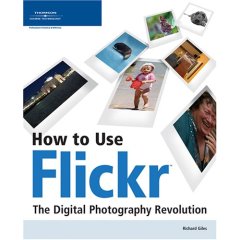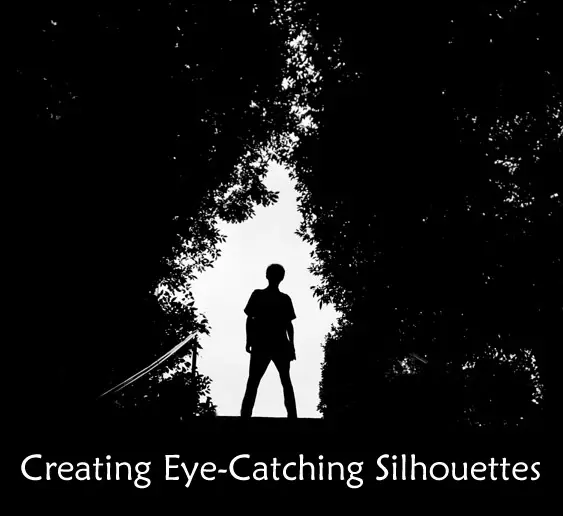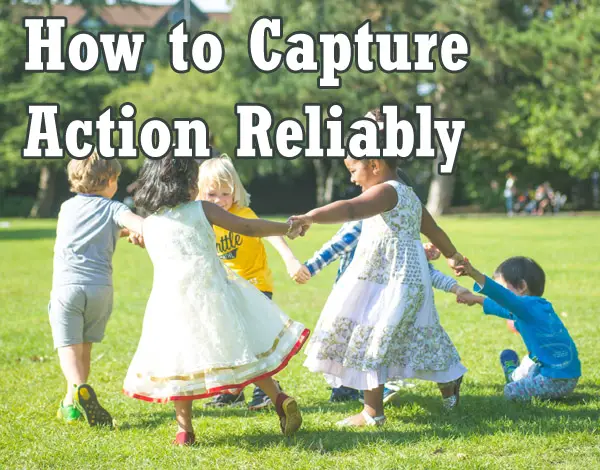There seems to be a lot of confusion among beginners and experienced photographers alike about what “depth of field” really is. Most people seem to know it has something to do with focus. But beyond that, it seems like a bit of a magical beast. Like most photography concepts, this one is pretty simple to understand. Read on and we’ll demystify this important subject.
Category: Photography Tips & Tricks
Book review: How to Use Flickr, The Digital Photography Revolution by Richard Giles
 From the outside, Flickr may appear to be a simple photo-sharing site. But new members are often quickly overwhelmed by the vastness of it and there are hundreds of features and hidden gems that are sometimes only discovered after weeks or months of poking around. Flickr itself doesn’t have much in the way of a user manual, preferring instead to let people learn how to use the service by providing an elegant and self-explaining user interface and through group discussions. Attempting to bridge the gap, How to Use Flickr by Richard Giles is both a reference and a how-to guide for using Flickr. It’s also something of a tour-guide, explaining Flickr’s origins and revealing, through interviews and stories, a bit about Flickr’s diverse culture.
From the outside, Flickr may appear to be a simple photo-sharing site. But new members are often quickly overwhelmed by the vastness of it and there are hundreds of features and hidden gems that are sometimes only discovered after weeks or months of poking around. Flickr itself doesn’t have much in the way of a user manual, preferring instead to let people learn how to use the service by providing an elegant and self-explaining user interface and through group discussions. Attempting to bridge the gap, How to Use Flickr by Richard Giles is both a reference and a how-to guide for using Flickr. It’s also something of a tour-guide, explaining Flickr’s origins and revealing, through interviews and stories, a bit about Flickr’s diverse culture.
Disclosure: I am mentioned in this book several times and it features my Flickr Toys collection but I don’t make any money from its sale and I bought my own review copy.
… Continue reading Book review: How to Use Flickr, The Digital Photography Revolution by Richard Giles
10 ways to tell if you’re a photographer
Does this sound like anyone you know?
- 1 GB of memory lasts most people a month but barely lasts you the afternoon.
- You know what aperture-priority means.
- You delete more photos in a week than most people make all year.
- You need just one more lens.
- You’ve crawled on the ground to get a shot of something rusty.
- Your camera equipment is worth more than your car.
- No one else brings a camera to an event if they know you’re coming.
- Your family doesn’t recognize you without a camera covering your face.
- You have thousands of pictures and you’re not in any of them.
- You’ve been up before dawn or out in the freezing cold or even done something semi-dangerous… all for a photograph.
Learning composition: getting in close and filling the frame
In the previous two installments of this series, basic concepts and lines and curves, we covered how to control what is in your viewfinder and the use of lines in your compositions. In this third article, I want to talk a little more about framing because it is so important. In particular, a very simple concept that can have a profound impact on your photographs: filling the frame with your subject.
… Continue reading Learning composition: getting in close and filling the frame
Learning composition: lines and curves
In my last post on composition I covered the basics: what composition is, how you can control exactly what appears in a photo (and what doesn’t), and some tips to get your started. A photo with impact grabs the viewer’s attention right away and doesn’t let go. Subject matter certainly contributes to this. But composition is one of the most important factors. Two photographs of exactly the same subject can look completely different and evoke different feelings in the viewer simply by changing the composition. In this second article, I’ll talk a little bit about another concept: how lines and curves can make a composition stronger.
Techniques for Creating Eye-Catching Silhouettes
Imagine standing before a canvas of sky, your camera in hand as the sun dips below the horizon. That’s where my journey with silhouette photography began.

I learned early on that these shots are more than just pictures; they’re stories waiting to be told. They convey drama and emotion through stark contrast and simplicity.
In this piece, you’ll learn how to harness light sources like that dipping sun, tweak your camera settings for those crisp silhouetted subjects against bright backgrounds, and tap into post-processing tricks to polish off each shot. By the end, capturing gorgeous silhouette portraits or creative landscape outlines will seem less like luck—and more like second nature.
… Continue reading Techniques for Creating Eye-Catching Silhouettes
Learning composition: basic concepts and framing
There are many things that go into the concept of “composition.” Composition is a defining characteristic that separates a forgettable snapshot from a photo that has a strong impact on the viewer. It’s more important than mega-pixels, more important than what equipment you use. This will be the first in an ongoing series to try and demystify this pretentious-sounding subject and show you how thinking about composition, even a little, can help you improve your photos. We’ll start with a few basic concepts and some guidelines you can follow that will help you start creating images with impact and that draw the viewer in.
… Continue reading Learning composition: basic concepts and framing
Backing up your photos: why and how
I recently finished a task that turned out to be undeserving of my procrastination and left me with a welcome sense of relief. I made a backup of every digital photograph in my collection, over 15,000 images, spanning nearly 6 years from early 2000. It had been far too long since my last backup. It was easy, didn’t take a long time, and now I know that these treasured memories will be safe if something catastrophic ever happens to the hard drive they are stored on. Here’s how I did it.
Understanding exposure: shutter speed, aperture, and ISO
When your camera is set on automatic, making a photograph is as simple as pressing the shutter release button. Somehow, the camera magically records just the right amount of light to render an image of the scene before it. But what is really going on? How does the camera know how to do that?
Read on to find out how a little knowledge about what goes into making an exposure can open up new worlds of creative possibilities.
… Continue reading Understanding exposure: shutter speed, aperture, and ISO
How to Capture Action Reliably and with Style
If you’re anything like me, you’ll be spending holidays with family and friends, eating, laughing, and, of course, making lots and lots of photographs. At our annual holiday gatherings there are an abundance of children.

And children make great subjects for photography except for one problem: they don’t sit still. A moving target is one of the most difficult things to photograph. Read on for some tips that should help make things a little easier.
… Continue reading How to Capture Action Reliably and with Style
to start
making profit!








